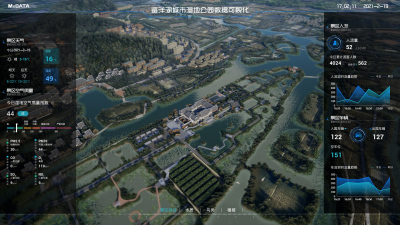Smart cultural and tourism services
- Based on digital technology and centered around human experience, this solution vividly and realistically reproduces the core information of architectural structures, infrastructure, roads, moving targets, and the surrounding terrain within a scenic area, creating a seamless and detailed visual experience. Leveraging a 3D visualization platform that integrates various types of data resources from the scenic area, it enables visual management of scenic resources and visitor flow, three-dimensional spatial video surveillance management, intelligent analysis of operational data, and visual command and dispatching for emergency response. This supports enhanced efficiency in managing people, events, and assets within the scenic area, continuously improving service quality and enriching visitors' tourism experiences.

行业痛点

Integrating and aggregating data from various business subsystems within the scenic area, a comprehensive intelligent monitoring and analysis system is built. This system provides precise insights and fine-grained management for key indicators in critical areas such as landscape resources, equipment resources, natural environment, and visitor flow management.
Supporting the integration of data from various IoT sensor devices, real-time data from sensors can be used to monitor changes in the physical environment around the artifacts, such as temperature, humidity, light exposure, and microbial growth. This provides curators and managers with more convenient and efficient preventive conservation methods for protecting the artifacts.
Using digital twin technology combined with detailed historical artifact records, we can trace back to the past and digitally reconstruct the original appearance and detail information of ancient buildings in a virtual space. By linking sensor and IoT monitoring data with 3D replicated scenes, this approach provides support for the preservation and restoration work of cultural relics.
Using virtual reality technology, physical structures, scenes, and objects are digitally recreated at a 1:1 scale, featuring 3D roaming and realistic presentations. With interactive experiences as a primary feature, augmented reality (AR), virtual reality (VR), and mixed reality (MR) are employed to create a fully immersive virtual world. This supports both automatic and manual multi-perspective roaming through the scenic area, breaking down the limitations of traditional time and space constraints for tourism, and creating an entirely immersive viewing experience.
Through image data collection, highly realistic and interactive digital twin models of artifacts are created, showcasing millimeter-level spatial geometric information and ultra-high pixel texture and material details. This approach provides a new pathway for the digital exhibition, study, and research of collections.









